Autistic 13-year-old should never have been shot, but officer won't face charges, DA says
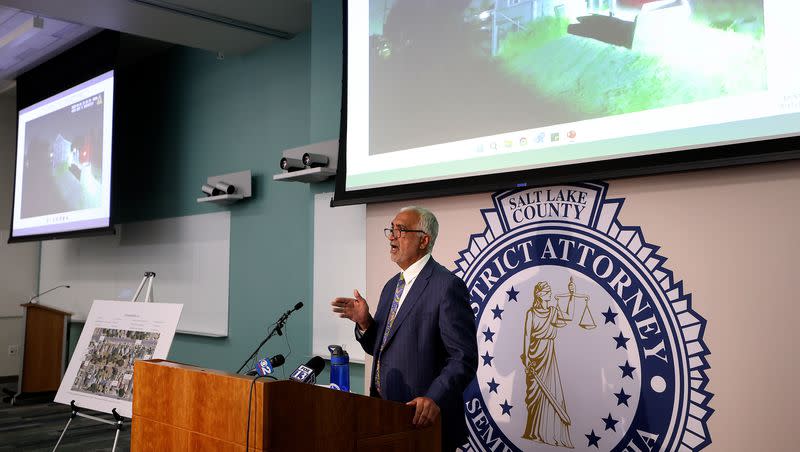
- Oops!Something went wrong.Please try again later.
A Salt Lake police officer was not legally justified when he shot a 13-year-old boy multiple times while the boy was having a mental health crisis and running away from police in 2020, investigators announced Friday.
But Salt Lake County District Attorney Sim Gill said he will not file any criminal charges against officer Matthew Farillas because of the high burden of proof that his team would have to meet in court to successfully prosecute the officer.
Nearly three years after 13-year-old Linden Cameron was hit by five of the 11 shots fired at him by Farillas in an incident that received nationwide attention, Gill announced his conclusion Friday into the police shooting investigation. Linden survived the shooting but was hospitalized and still requires long-term care.
"We cannot say that the shooting of an unarmed 13-year old child suffering a mental health crisis — who never presented even a facsimile of a weapon or an object which could have been mistaken for a weapon, and who did not act in a manner in which a fair inference would suggest a weapon — was reasonable," Gill's final report states. "However, in spite of the unjustified use of force, in applying the current law, the burden of proof required for a criminal prosecution, and the ethical safeguards imposed upon the prosecution, we are unable to proceed with a criminal prosecution."
On Sept. 4, 2020, Golda Barton called police asking for help with her son, Linden. Barton said Linden is autistic and was previously diagnosed with Asperger syndrome, and, that night, was having an emotional episode while she was at work. She drove home and called 911 and asked for officers with Crisis Intervention Team training to respond.
"I explained to them he's upset. He's having an episode, he needs to go to the hospital," Barton told police.
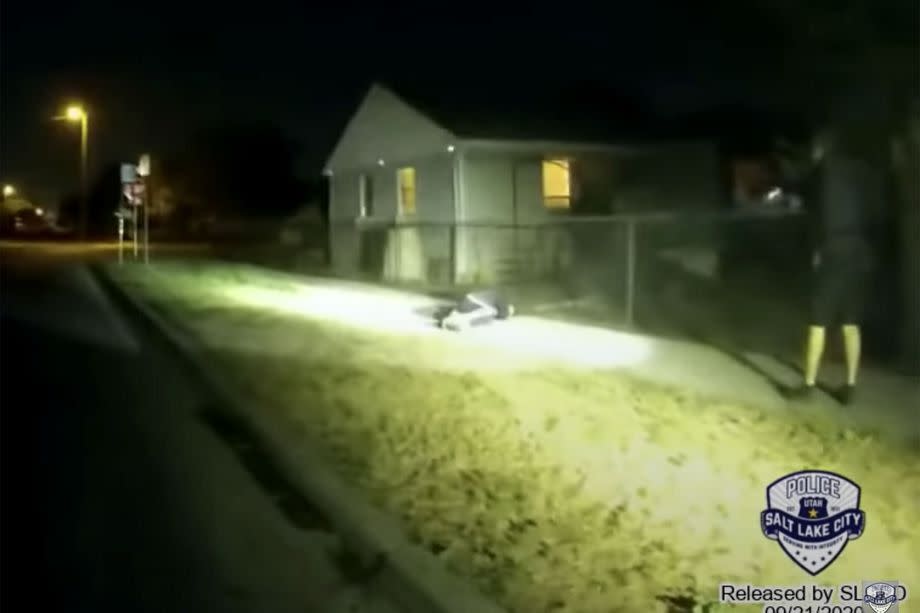
Officers responded to a report of a juvenile having a "violent psychological issue," according to police. In the 911 call, Barton tells dispatchers that Linden has had violent tendencies in the past.
Three officers — all of whom had Crisis Intervention Team training, including Farillas — responded and met with Barton down the street from her home in the area of 500 South and Navajo Street (1335 West). She explained that her son is afraid of police, doesn't like officers and would likely try to run if they yelled and chased after the boy. She also said she wasn't sure if Linden had a BB or pellet gun with him, but was fairly confident he did not have a real gun.
"I need him to go to hospital," a fatigued Barton tells the officers. "I cannot do this every night."
As two officers go to Barton's front door and knock, an officer in the driveway yells that someone was in the backyard.
"Police. Stop running!" the officer yells at the boy.
At one point, Linden can be heard telling the officer, "No," as he scales a wooden fence.
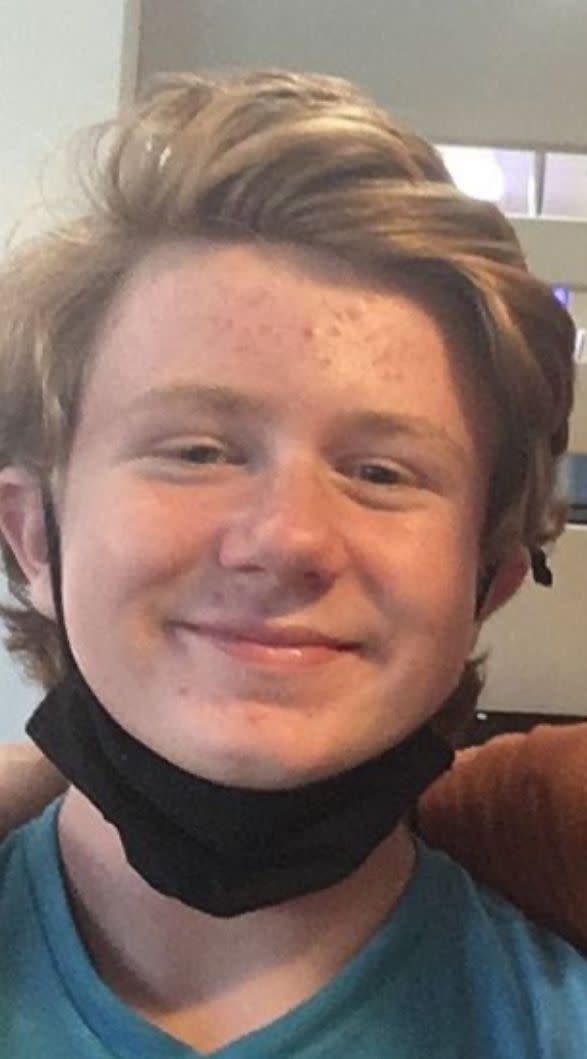
Officers chased Linden down an alley, and at one point kicked through the wooden fence to get to him. In police body camera video, just before the boy is shot, one officer says, "Pull your hands out, dude. Pull your hands out!" It is not clear in the videos exactly what prompted the officer to shoot.
"Based on a review of the body-worn camera recordings, it appears that about 1 minute and 46 seconds elapsed between when officers first knocked on the front door and when officer Farillas fired his weapon; about 1 minute and 24 seconds elapsed between when officer Farillas first yelled commands to (Linden) and when he fired; and about 8 seconds elapsed between when officer Farillas began yelling to 'Get on the ground' and when he fired," the district attorney's report states.
The body camera videos were critical to investigators in piecing together what happened that night, according to the report. But Gill also notes that "the videos fail to clearly capture (Linden's) words and actions in the moments immediately preceding the shooting. Overall, the video images are low-resolution, grainy and with poor lighting. The audio quality is poor."
When interviewed as part of the shooting investigation, Farillas admitted his vision, while running after Linden, was obstructed by the fence. He also said he remembered a prior incident one of his lieutenants had told him about during which the lieutenant rounded a corner while running after a gunman and was shot at. Because of that, Farillas says he had his gun out and ready.
"I saw him trying to hop a fence into a neighbor's house. I was concerned that if he got into that house he was going to shoot them, or it would turn into a hostage situation," he told investigators, according to the report. "He had came off of the fence. And as I'm giving him commands to get on the ground, I see his hand go to his right waistband. I'm thinking, 'He has a gun. He's going to try to kill me or kill someone else,' and that's when I made the decision to fire. I didn't feel like there was an opportunity to use a Taser just because of the gap.
"He was looking right at me, but he did not say anything," Farillas said during follow-up questions.
"Did you ever see a weapon in his hand?" the investigator asked.
"I did not. I do not recall," Farillas responded.
"But were you able to see his full hand or was it covered by his clothing or anything?"
"So his hoodie went down to his wrist, and then I saw his hand go here. From what I saw, part of his hands here did disappear," he responded.
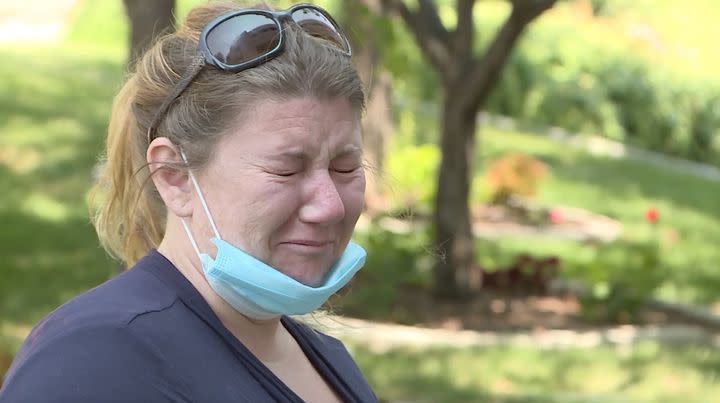
The Salt Lake County District Attorney's Office also had two court-qualified expert witnesses review the shooting. The final report from the experts was not received by the office until just three weeks ago.
One expert, Natasha Powers, a retired police sergeant from Colorado, concluded that Farillas did not use good judgment and his "actions were not in concert with established police practices and guidelines," according to the report.
"It is important to know that officer Farillas NEVER said, 'Show me your hands, hands in the air,' or anything that would have commanded (Linden) at minimum to show his hands. Additionally, (Linden's) hands can be seen off and on during this encounter and there does not appear to be anything in his hands," Powers wrote in her opinion.
Furthermore, Powers noted in his interview with shooting investigators, that Farillas "continues to misstate the facts of this case. This call never came out, 'that the juvenile had a gun' and was making threats to use 'that' gun."
The second expert, however, Eric Daigle, an attorney and retired police officer from Connecticut, concluded that Farillas was justified in using deadly force.
"Officer Farillas was faced with a split-second decision in this rapidly evolving, tense and uncertain event, which left him with no choice but to respond with the use of deadly force," his report states.
It was, in part, because of the differing expert opinions that Gill said his office decided it could not proceed with criminal charges.
However, Gill's report addresses the notion that Farillas believed Linden had a gun when he shot at him, and that "he was nevertheless factually, objectively wrong about the necessity for him to use deadly force."
"(Linden) did not and could not have threatened officer Farillas with death or serious bodily injury because (he) did not have a gun on him or any other means to do so. In addition, (Linden) did not have, nor did he present at any time, any facsimile of a weapon or other object which could reasonably have mistaken to be a gun. Even though officer Farillas testified that he believed deadly force was necessary, it was not," the report states.
Gill says it is important to note that Farillas, in his interview, never gave a reason why he believed Linden had a gun.
"Indeed, we know that (Linden) never had a gun on him during the incident and that (he) did not have anything in his hands as he was trying to climb the fence," the report states. "Further, we are not aware of any threatening words, gesture, behavior, or act by (Linden); for example, at no time did (he) make any verbal threat to the officers, position himself to fight or attack, take a fighting stance, or create less distance or advance on an officer.
"Furthermore, officer Farillas himself explained that his 'plan was to tackle (Linden). That in itself speaks to that he did not think (Linden) had a gun. Finally, in the moments before the shooting, officer Farillas did not call out 'gun' or tell (Linden) to show him his hands. Rather he commanded (Linden) to get on the ground," the report states.
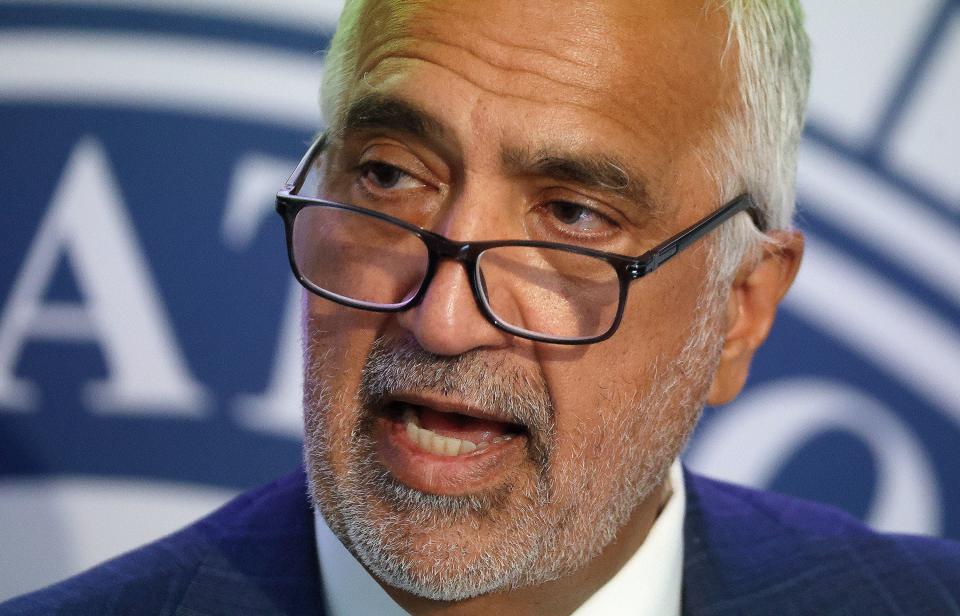
As the situation unfolded, Gill said the evidence should have led officers to believe that Linden was simply trying to run away.
In this case, the burden of using force falls on the officer who was trained in responding to a person having a mental health crisis, Gill notes in the report, adding that he is very concerned about how the incident was handled by all of the officers involved.
"In this case, we are concerned by the pattern of decision-making by the officers throughout the call for service and believe that their decisions and actions gave rise to the final confrontation where the use of force was ultimately used. This was an avoidable shooting that did not need to escalate to the point where lethal force was used.
"The outcome in this case — i.e., the shooting of a child suffering a mental health crisis — was the consequence of procedural missteps by the police throughout their response to the call for service. Such an outcome must be prevented from reoccurring," the report says.
Eleven months ago, Linden's family announced they had reached a $3 million settlement with Salt Lake City over the shooting.
In a statement released when the settlement was announced, the family maintained that the police "acted recklessly," but they sought the settlement out of a "desire to provide for Linden's long-term care, to minimize the family's emotional trauma associated with the shooting and to resolve the case outside of formal litigation." The statement noted the payment was the largest settlement paid by Salt Lake City in a shooting case of this type.
Gill is now holding a press conference to go over the findings of his report.
This story will be updated.

